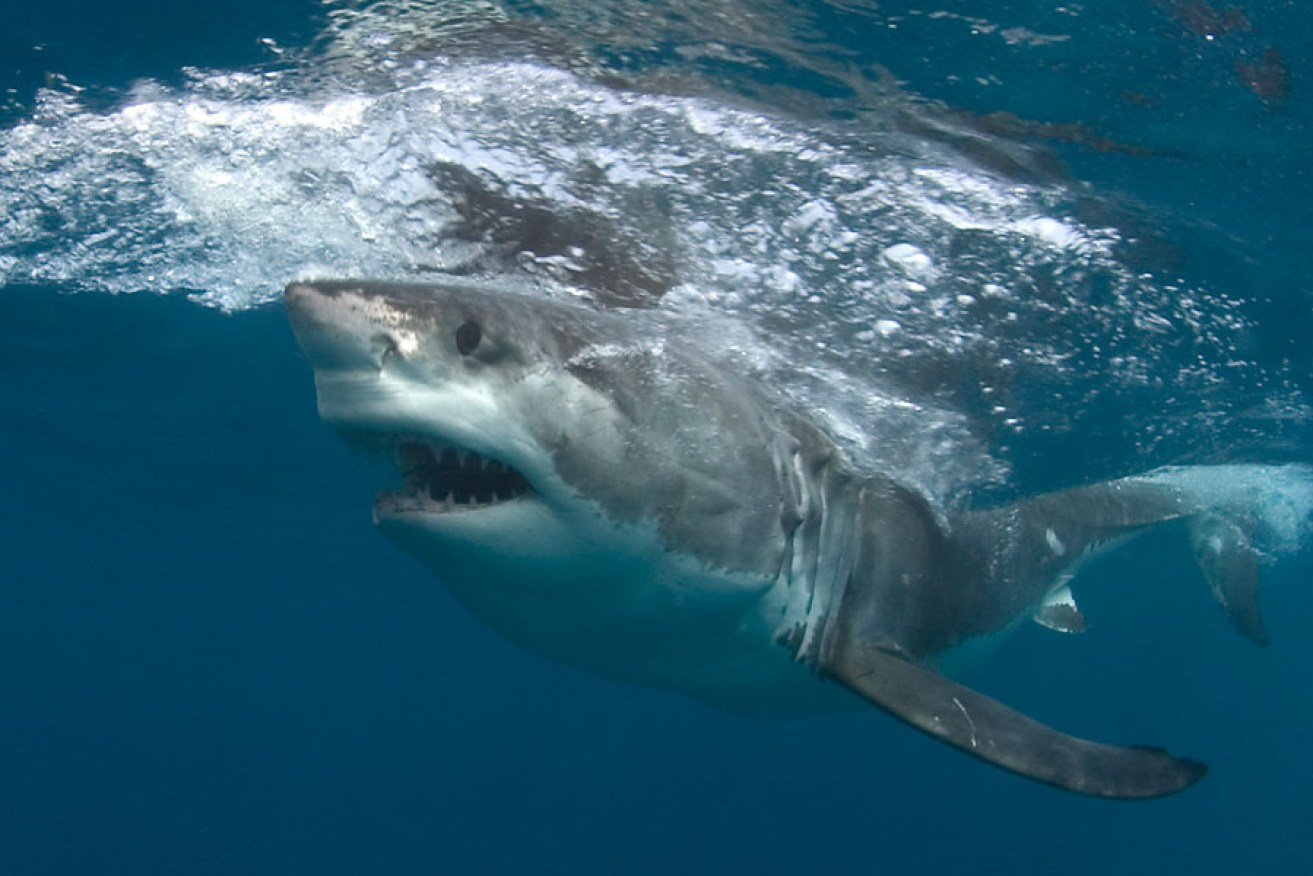Aerial patrols miss most sharks: new research

A Great White Shark near the Neptune Islands, in the entrance to Spencer Gulf.
Helicopter shark patrols spot less than one in five sharks, even in clear water, and aren’t good for much more than giving swimmers peace-of-mind, according to soon-to-be-published research.
Helicopter patrols spot 17.1 per cent of sharks in a given area – better than fixed-wing aircraft shark-spotters, who find only 12.5 per cent of the deadly marine predators.
“Although the public may feel safer knowing that aircraft are in the air, the tangible difference these flights make to an individual’s safety from shark attack at any one of these beaches is likely to be small,” a preliminary version of the paper, now accepted for publication in the scientific journal PLOS ONE, concludes.
Surf livesavers are currently fighting with the State Government over a $140,000 cut to helicopter shark patrol funding.
There have been 109 reported shark sightings in South Australia this year according to State Government figures, of which four were spotted from fixed-wing patrols and 10 from chopper patrols.
But according to one of the paper’s authors, former chief scientist for New South Wales’ Department of Primary Industries and now marine consultant Steven Kennelly, the patrols are essentially a waste of money anyway.
“As an early warning system, they tend to give people comfort that people are flying around above them and spotting these things,” Kennelly said.
“They think ‘oh look that’s good, they’re looking for sharks’ and they feel good about it. In effect, they’re probably having fairly minimal impact on identifying when there’s dangerous sharks around or when there’s a major threat of attack.”
Kennelly’s study – originally prepared for the New South Wales Government – deployed 2D wooden shark dummies at varying lengths in a bay with clear water. Crews were asked to do flyovers of the bay and spot the sharks – which they struggled to do.
The fixed-wing crew in the test had significant experience patrolling for sharks but the helicopter crew was not a professional shark-patrol team.
The findings were even more concerning, Kennelly told InDaily, when you consider that most shark attacks take place in times of low visibility.
“Most interactions with humans occur at dawn or dusk in murky water, overcast conditions.
“And they’re the sort of conditions when aerial patrols are either not flying or they can’t spot the sharks very well.”
Kennelly argued funding should go to methods with proven effectiveness – such as lifeguards watching from beaches.
“The best way to safeguard people swimming at beaches is to keep driving the same messages home. Stay between the flags.
“There hasn’t been a fatal shark attack, or any sort of shark attack, while people are bathing between the flags. Give our lifesavers who are on the beaches all the time the right equipment like the right binoculars, observation towers.
“Jetskis are really useful – when they spot a shark they can get out there quickly and get the shark out of the area. They do it all the time and they’re very good at it.”
In 2007 the New South Wales Government cut their own aerial shark patrols after finding them ineffective at spotting the marine predators.
InDaily has contacted Surf Life Saving Australia for a response.




